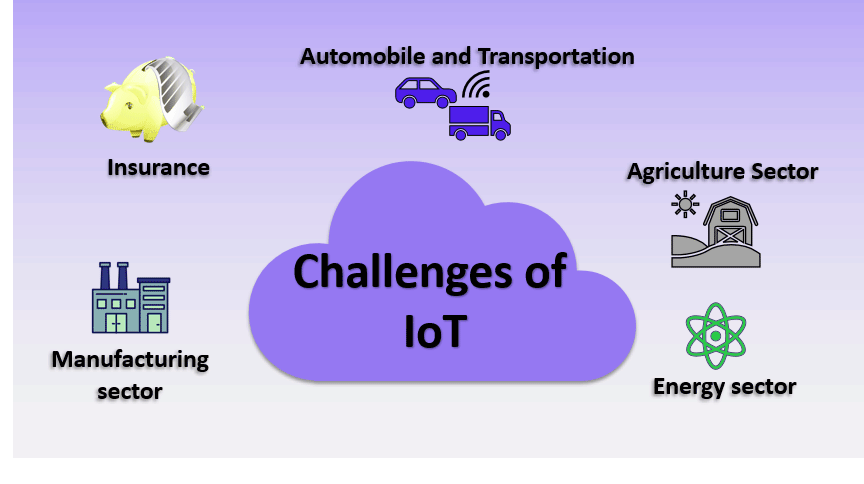The Internet of Things refers to the network of interconnected physical devices embedded with sensors, software, and other technologies that enable them to collect, exchange, and act upon data. This interconnectedness goes beyond just computers and smartphones; it encompasses everyday objects like home appliances, vehicles, wearable devices, and more. The IoT revolutionizes how these devices communicate, providing us with unprecedented insights and control over our environment.
Explore the Contents
The Core Components of IoT
Sensors and Actuators: The Senses of IoT
At the heart of IoT are sensors and actuators. Sensors gather real-world data, such as temperature, humidity, light, and motion, while actuators enable devices to perform actions based on the received data. For example, a smart thermostat uses temperature sensors to regulate indoor climate, while actuators control the heating or cooling systems.
Connectivity: Bridging the Digital Divide
Connectivity forms the backbone of Internet Things IoT. Devices communicate with each other and with central systems using various technologies such as Wi-Fi, Bluetooth, Zigbee, and cellular networks. This seamless communication allows for remote monitoring, control, and data exchange, enabling the creation of interconnected ecosystems.
Data Processing and Analytics: Transforming Raw Data into Insights
The data generated by IoT devices can be massive and complex. To derive meaningful insights, data is processed and analyzed using advanced algorithms and cloud computing. This enables businesses and individuals to make informed decisions based on trends and patterns.
Applications of IoT Across Industries

Smart Homes: Enhancing Convenience and Security
The concept of smart homes has gained traction, offering homeowners automated control over various devices. From adjusting lighting and temperature to managing security systems remotely, IoT-enabled homes provide convenience and peace of mind.
Healthcare: Revolutionizing Patient Care
Internet IOT Things IoT has revolutionized healthcare with wearable devices that monitor vital signs, track medication adherence, and transmit data to healthcare providers in real time. This remote monitoring enhances patient care and allows for early intervention.
Transportation: Enabling Smart Mobility
IoT plays a pivotal role in modernizing transportation systems. Smart vehicles equipped with IoT technology can communicate with infrastructure and other vehicles to optimize traffic flow, enhance safety, and reduce congestion.
Agriculture: Precision Farming for Sustainable Agriculture
In agriculture, IoT-driven precision farming techniques utilize sensors to monitor soil conditions, crop health, and weather patterns. This data-driven approach enables farmers to optimize resource usage, increase yields, and promote sustainable practices.
Challenges and Considerations in the IoT Ecosystem

Security and Privacy: Safeguarding Sensitive Data
With the proliferation of interconnected devices, ensuring the security and privacy of data becomes paramount. Vulnerabilities in IoT devices can lead to data breaches, emphasizing the need for robust security measures and encryption protocols.
Interoperability: Ensuring Seamless Device Communication
The Internet Things IoT landscape comprises a multitude of devices from different manufacturers. Interoperability challenges arise when devices struggle to communicate effectively with one another. Standardized protocols and open architectures are essential to overcoming this hurdle.
Scalability: Handling the Influx of Data
As IoT adoption grows, the volume of generated data surges exponentially. Efficient data storage, processing, and management are crucial to prevent bottlenecks and ensure smooth operations.
Future Trends and Possibilities
Edge Computing: Redefining Data Processing
Edge computing involves processing data closer to its source rather than sending it to a centralized cloud server. This approach reduces latency, enhances real-time capabilities, and conserves network bandwidth.
5G Integration: Accelerating IoT Adoption
The rollout of 5G networks promises high-speed, low-latency connectivity. This advancement is a catalyst for widespread IoT adoption, enabling applications that require rapid data exchange and seamless communication.
AI and Machine Learning: Enabling Predictive Insights
AI and machine learning amplify the potential of IoT by enabling devices to learn from data patterns and make intelligent decisions. Predictive analytics enhance efficiency and enable proactive maintenance.
Impact on Society and Everyday Life

Improved Efficiency and Resource Management
Internet IOT Things IoT-driven insights empower businesses to optimize their operations, reduce energy consumption, and streamline processes. In everyday life, smart devices enhance convenience by automating routine tasks.
Enhanced User Experience and Convenience
IoT enhances user experiences by tailoring services to individual preferences. From personalized recommendations to adaptive environments, IoT enriches our interactions with technology.
Ethical and Social Implications of a Connected World
The widespread adoption of IoT raises ethical concerns regarding data privacy, security, and surveillance. Striking a balance between convenience and safeguarding individual rights is a critical challenge.
The Internet of Things has reshaped our world, offering unprecedented connectivity and insights. As IoT continues to evolve, its impact on industries, society, and everyday life will only deepen. Embracing the benefits while addressing the challenges will be pivotal in shaping a responsible and connected future.
Read More: How Hidden Mindset Issues Affect Your Career Development
FAQs (Internet of Things IOT)
Is the Internet of Things secure?
IoT security is a complex challenge. While efforts are being made to enhance security measures, users should also take precautions like regular updates and strong passwords.
How does IoT benefit businesses?
IoT improves operational efficiency, enables data-driven decision-making, and opens new avenues for customer engagement and service innovation.
Can IoT work without internet connectivity?
While some IoT devices can function in local networks without internet, many rely on internet connectivity for remote monitoring and data exchange.
What role does AI play in IoT?
AI empowers IoT devices to analyze data, identify patterns, and make autonomous decisions, enhancing their capabilities and usefulness.
How is IoT shaping urban development?
IoT contributes to smart city initiatives by optimizing traffic flow, managing energy consumption, and enhancing overall urban planning and infrastructure.
Read More: 5G Technology: Unlocking the Potential of Hyperconnectivity

